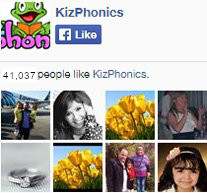Engaging Activities for Phonemic Awareness in Phonics Education
In the fascinating journey of phonics education, phonemic awareness stands as a crucial milestone. Phonemic awareness lays the foundation for strong reading and language skills by helping children recognize and manipulate the individual sounds, or phonemes, in spoken words. This article delves into the realm of activities that foster phonemic awareness, offering a treasure trove of engaging exercises to nurture young learners' linguistic abilities.
Table of Contents:
• Introduction
• Understanding Phonemic Awareness
• Unlocking the Power of Phonemic Awareness Activities
• Exploring Various Activities for Phonemic Awareness
• Fact Section: FAQs about Phonemic Awareness Activities
• Conclusion
Introduction: Embracing the Magic of Phonemic Awareness Activities
In the enchanting world of early literacy, phonemic awareness is the magical key that unlocks the door to proficient reading and writing. Phonemic awareness activities engage young learners in playful and purposeful exercises that sharpen their ability to recognize and manipulate the smallest units of sound in language.
Understanding Phonemic Awareness
Phonemic awareness is the ability to hear, identify, and manipulate individual phonemes in spoken words. Phonemes are the smallest units of sound that distinguish one word from another. For example, the word "cat" is composed of three phonemes: /k/, /æ/, and /t/.
Developing phonemic awareness is a crucial precursor to reading success. Children who can isolate and manipulate phonemes are better equipped to decode words, spell accurately, and develop strong vocabulary.
Unlocking the Power of Phonemic Awareness Activities
Phonemic awareness activities are not just educational exercises; they're interactive adventures that immerse children in the world of sounds. These activities are designed to be engaging, enjoyable, and effective in building the foundational skills necessary for reading and writing proficiency.
Through phonemic awareness activities, children become more attuned to the sounds that make up words, enhancing their overall phonological awareness—the ability to recognize and manipulate larger units of sound in language.
Exploring Various Activities for Phonemic Awareness
**1. Phoneme Segmentation:
Challenge children to break words into individual phonemes. For instance, for the word "dog," they would segment it into /d/, /o/, and /g/.
**2. Phoneme Blending:
Encourage children to blend individual phonemes into a complete word. For example, they would blend /b/, /a/, and /t/ to form the word "bat."
**3. Phoneme Deletion:
Guide children to remove a specific phoneme from a word and determine the resulting word. Removing the /c/ sound from "cat" would result in "at."
**4. Phoneme Substitution:
Have children substitute one phoneme for another in a word. They could change the /p/ in "cap" to /t/ to form "cat."
**5. Rhyming Games:
Engage children in rhyming activities where they identify words that rhyme with a given word. Rhyming helps children recognize similar sounds in different words.
**6. Syllable Counting:
Ask children to clap or stomp for each syllable in a word. This activity develops their ability to break words into syllables, a skill that aids in reading longer words.
**7. Odd One Out:
Present a set of words and ask children to identify the word that doesn't rhyme with the others. This activity sharpens their ability to detect sound similarities.
**8. Sound Matching:
Provide children with sets of words and ask them to match words with the same initial or ending sound.
**9. Sound Isolation:
Have children identify the beginning, middle, or ending sound in a word. For instance, they could identify the beginning sound in "sun."
Fact Section: FAQs about Phonemic Awareness Activities
Q1: At what age should I introduce phonemic awareness activities?
A1: Phonemic awareness activities can be introduced in preschool and continued throughout early elementary years. Tailor the complexity of activities based on the child's age and skill level.
Q2: How often should I incorporate phonemic awareness activities?
A2: Regular practice is essential. Aim for daily or frequent sessions, keeping them short and engaging to maintain children's interest.
Q3: Are phonemic awareness activities suitable for struggling readers?
A3: Yes, phonemic awareness activities can benefit struggling readers by strengthening their foundational skills. Start with simpler activities and gradually increase complexity.
Q4: Can phonemic awareness activities be adapted for remote learning?
A4: Absolutely. Many phonemic awareness activities can be adapted for virtual classrooms using interactive tools and virtual manipulatives.
Q5: How can I make phonemic awareness activities engaging?
A5: Incorporate movement, visuals, and hands-on materials. Turn activities into games, use storytelling elements, and provide positive reinforcement.
Conclusion: Nurturing Literacy Through Playful Phonemic Awareness
As you embark on the journey of phonics education, remember that phonemic awareness activities are not mere exercises; they're windows into the magical world of language sounds. By engaging children in activities that encourage them to listen, manipulate, and explore the building blocks of words, you're paving the way for a strong foundation in reading and writing.
To delve further into the realm of phonics education and discover an array of resources, visit Kizphonics. As you explore phonemic awareness activities with your young learners, you're igniting a lifelong love for language—a love that will carry them through their educational odyssey and beyond.










